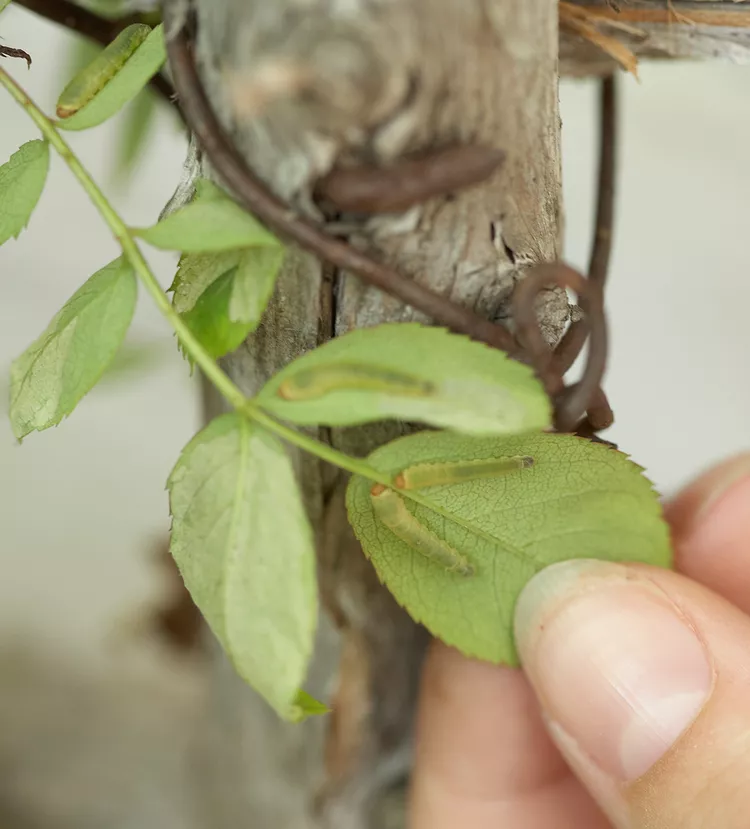If you've noticed little green worms on roses in your garden, usually found on the underside of the leaves, it's time to take action. Commonly known as rose slugs, these caterpillar-like creatures are the larvae of a sawfly (a small, non-stinging wasp relative). Rose slugs won't hurt you and won't kill your plants, but you may want to get rid of them ASAP because they'll quickly eat holes in your rose foliage. The good news is that there are a few easy ways to get them under control. Here's how to get rid of rose slugs.
What Is a Rose Slug?
Rose slugs look like caterpillars or even miniature slugs, hence their name. But a rose slug is neither a true slug nor a caterpillar (which becomes a moth or butterfly). Instead, those velvety green worms on roses are simply larvae of the rose sawfly. Rose slugs can get up to half an inch long.
Signs of Rose Sawfly Damage
The sawfly larvae will appear on roses in late spring and begin eating leaves' soft, green tissue. The remaining veins of the leaf they don't eat will turn brown and crisp. The damaged foliage will have a window-pane or skeletonized appearance. Generally, rose slugs will only make plants look bad, but most roses will grow new leaves once the pests are gone. Sometimes, heavier infestations can weaken your rose plant enough that it's more vulnerable to other insects and plant diseases.
Check Plants for Signs of Infestation
The key to effective rose sawfly control is to find the green worms on roses (larvae) while they are still small and before the damage becomes severe. Start looking for sawfly larvae on the lower surfaces of your rose leaves in mid-spring. There is no need to treat the rose foliage after the larvae have finished eating and are no longer on the plants. The larvae only stick around for about a month before they make their cocoons.
How to Treat Sawfly on Roses
If you have a small number of rose slugs on just a few plants, the best approach would be to hand-pick them off and drop them in a cup of soapy water. You can also use a forceful spray of water out of a garden hose, which will knock off and destroy many of the larvae. Be sure to spray the water on the leaves' upper and undersides. Using insecticidal soap or neem oil to control these pests is also an option.




















